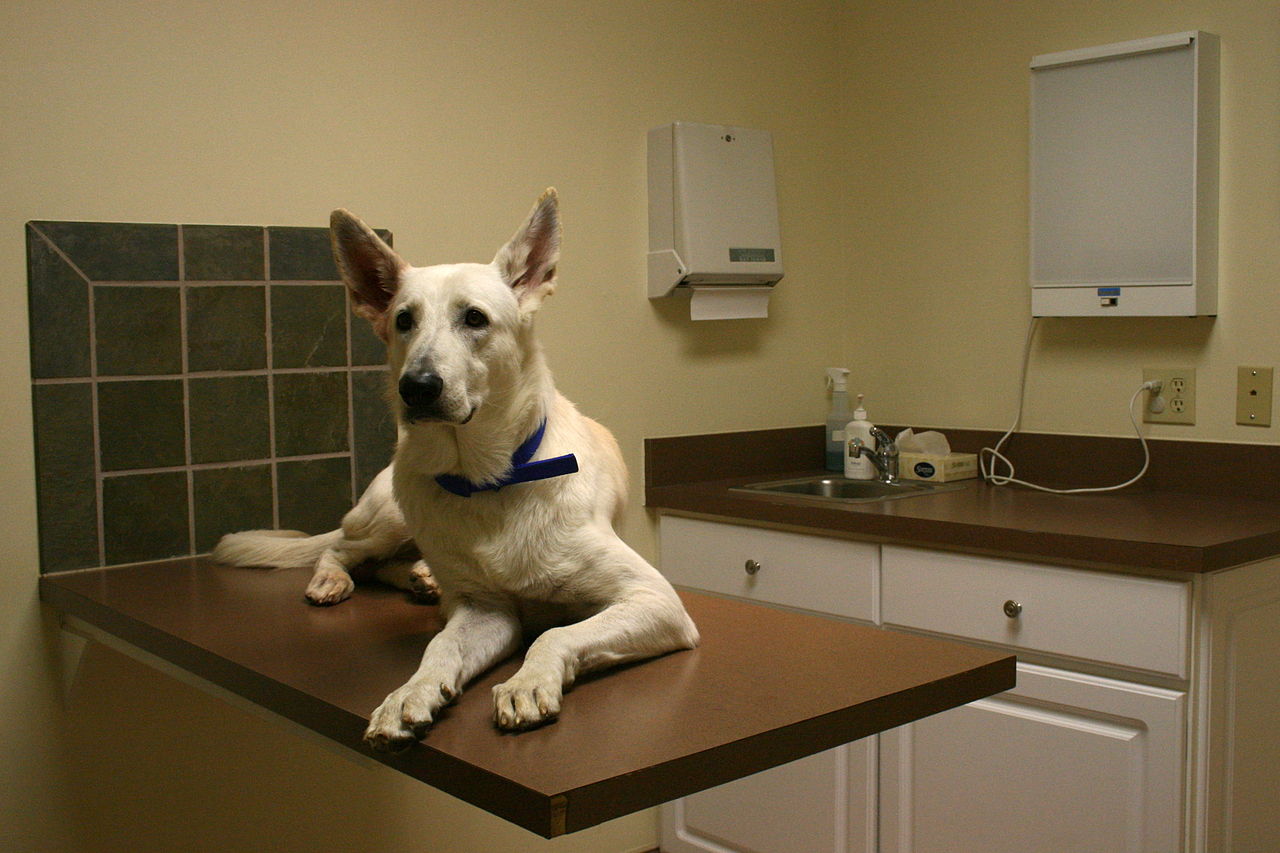The gold standard for dogs with osteosarcoma, bone cancer, is amputation and chemotherapy. However there are other options available for dogs that may not be able to undergo amputation. 1. One option is to cut out the cancer-affected bone. The diseased bone is then replaced by a donor bone or cement spacer. It is secured […]
Dog Diseases
There are a number of diseases dogs are prone to and I’ll talk about some of them here. I’ll also try to include specific breeds of dog that are prone to certain illnesses and diseases.
I would advise you to be aware of your dog’s normal behavior. Signs of illness can be lack of appetite, decreased activity, weakness, not drinking much, not grooming, bad breath, sleeping more than usual, drooling, vomiting, diarrhea, coughing, trouble breathing, frequent and/or bloody urination. If your dog exhibits any of these symptoms or any behavioral changes and you are unsure of what to do, seek the advice of your veterinarian.
Things you need to know:
The normal color of a dog’s gums is pink. Pale, white, blue or yellow gums, contact your vet at once.
Normal temperature for a dog is 100-102.5 degrees Fahrenheit. Less than 99 degrees or over 104 degrees, contact your vet immediately.
A dog’s heart rate slows and speeds with each breath. This is not abnormal. You can check the heart rate by finding the femoral artery inside the back leg. Small dogs and puppies heart rate is 120-160 beats per minute. Dogs that are about 30 lbs. have a rate of 60-120 beats per minute. The larger the dog, the slower the heart rate.
A dog’s normal respiration rate is 10-30 breaths per minute. Panting can be up to 200 pants per minute.
To check if your dog is breathing, hold a tissue or mirror up to his nose. If there is movement or breath on the mirror, your dog is breathing, but get him to the vet immediately.
Problem signs are using the abdominals to breathe, gasping, loud noises, shallow breaths, difficulty exhaling. Call your vet immediately.
If you have any questions, I’ll be happy to answer them.
Note: Many new pet owners do not know about the availability of pet health insurance. Insurance for your dog is a great safety net to have for unforeseeable emergencies or illnesses. It is also helpful in covering routine shots and exams. Some plans start at just five dollars a month. To compare pet insurance plans in your area check out the link above.

Cherry Eye in Dogs and Cats
Dogs and cats are among the mammals that have a third eyelid which gives the eyes extra protection. Cherry Eye is the name given to the tear gland wrapped around the cartilage of the third eyelid that prolapses (bulges or pops out from beneath the eyelid). It looks like a small cherry in the inside […]

Inflammation of the Pancreas
The pancreas is described as a gland organ in the digestive and endocrine system. As an endocrine gland it produces hormones such as insulin. The pancreas also secretes pancreatic juice which contains digestive enzymes that in the small intestine, help break down carbohydrates, protein and fat. Pancreatitis is a result of inflammation of the pancreas. […]

Legg Perthes in Dogs
Legg Perthes disease is found in small breed dogs, where destruction of the head of the femur bone occurs due to loss of blood supply. Some breeds prone to this disease are West Highland White Terrier, Poodles, Fox Terrier, Shih Tzu, Pug, Silky Terrier, Bichon Frise, Schipperke, toy breeds, Miniature Pinscher, American Eskimo Dog, Bichon […]

Brachycephalic Syndrome
Brachycephalic Syndrome is a group of upper airway abnormalities often seen in flat-faced dogs such as Pekingese, Pug, Bulldog, Boston Terrier and French Bulldog. It refers to the combination of elongated soft palate, stenotic nares, and everted laryngeal saccules, which are commonly seen in these breeds. It is an inherited disease which causes difficulty in […]

Anal Sac Impaction
Dogs have 2 anal sacs located on either side of the anus. Anal sacs in dogs are similar to the scent glands of skunks. While skunks use their scent for defense, dogs mark their territory when defecating with secretions from the anal sacs. There is a strong odor emitted from the sacs. When dogs smell […]

Von Willebrand’s Disease
Symptoms of von Willebrand’s Disease are excessive bleeding caused by a deficiency in a clotting factor. Dogs with Von Willebrand’s disease might also develop nosebleeds, or bleeding from the gums. Some may have blood in their urine or their stool. There is no cure for Von Willebrand’s disease, but blood transfusions can help manage the […]

Dermoid Sinus
Dermoid Sinus is a congenital defect in the tubes from the surface of the skin down to the spinal column (Spina bifida in humans). As the disease progresses, the dog suffers great pain. The sinus is removed in surgery. The recovery can be as traumatic as the operation itself. A recovering dog must be kept […]

Patellar Luxation
The Patella is another name for the kneecap. The Patella is in a track where it slides up and down when the knee bends and extends. Patellar Luxation is when the groove in the knee is abnormally shallow and the knee cap slips in and out of position in the stifle (knee) resulting in lameness. […]

Pyometra infection in Dogs
Pyometra is an infection causing pus in the womb. This is a disease which affects dogs who have not been spayed. Surgery must be performed to remove the ovaries and womb as this infection will result in death if left untreated. Symptoms Drinking excessive quantities of water Urinating large amounts frequently Licking the vagina (at […]
